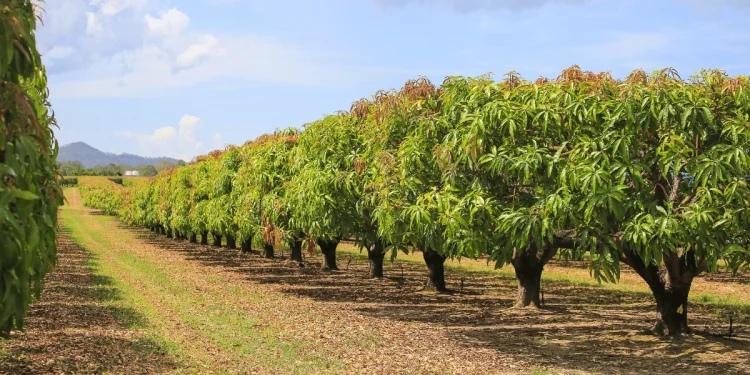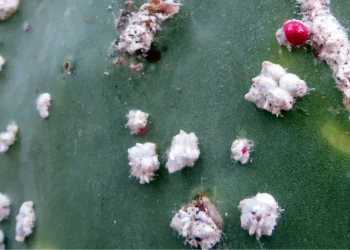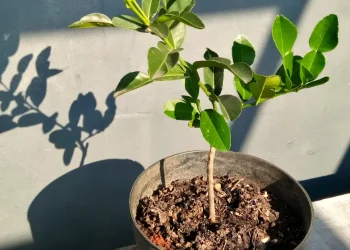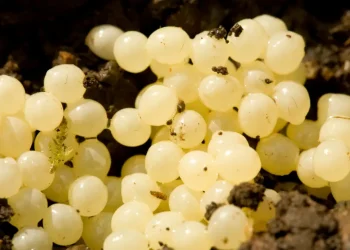Mango is a tropical tree, does that mean that it doesn’t shed its leaves? Well, not exactly.
I have always loved any tropical fruit there is to eat. And as a proper gardener, I decided to visit my friend’s farm to see these beauties in person. And as we walked past a row of tall trees, I couldn’t help but marvel at the lush green foliage that adorned their branches. “Wow, these trees look so beautiful,” I exclaimed. “I wish they could stay like this forever!”
Well, to my surprise, they do not stay like that forever. Mango trees are actually deciduous, or at least semi-deciduous. These trees do shed their leaves, just not all at once as most deciduous trees do.
I couldn’t believe that I was so misinformed about one of the most basic facts about mango trees, how many others out there were in the same boat? And that’s not all. There are other interesting things about mangoes’ winter habits. So strap on your gardening gloves, and let’s dive into this question, shall we?
Are Mango Trees Deciduous or Evergreen?
Unfortunately, the answer to the question of whether a mango tree is deciduous or evergreen is not a simple yes or no.
While some mango trees are technically evergreen, meaning they retain their leaves year-round, others could be categorized as semi-deciduous. As they shed their leaves.
However, you will never see a mango tree completely trunk naked. The mango tree will lose its leaves periodically during the whole year and quickly replace them within the same season. So even when mango sheds a few leaves in the winter, they will regrow quickly after. But in the end, the mango tree will keep most of its leaves.
For the same reason, most of the tree canopy will stay green. Only the older leaves that have completed their photosynthetic duties turn yellow and are then shed.
Do Mango Trees go Dormant?
While many plants go through periods of dormancy during the winter months, along with shedding their leaves, mango trees typically don’t go fully dormant.
That doesn’t mean that they will bear fruits all year round. At least not in the same quantity. During winter, mangoes may experience a period of reduced growth. During this time, the tree may redirect its resources and energy toward maintaining its root system and preparing for the upcoming growing season.
But there are also types that don’t slow their pace at all. For instance, a Thai Mango tree has two harvesting seasons during the year. One in summer and the other in winter.
Should Mango Tree be Losing a lot of Leaves?
As you should know by now, a mango tree does not lose a lot of leaves during the year. But what if your does?
I can be a sign of several underlying issues that need to be addressed. The first step is to identify the cause of the leaf loss. It’s typically caused by one of these issues:
- Environmental stress. While mangoes don’t shed their leaves, it doesn’t mean they are immortal. They need protection against extreme weather changes, especially during growth. Factors such as extreme temperatures, drought, or pool soil quality can affect the tree’s ability to absorb water and nutrients and cause leaf loss. Also, harsh winds can physically damage the leaves and cause shedding.
- Irregular water supply. Mangoes grow in South Asia, where it rains a lot. These trees are used to a heavy and regular water supply. If there is not much rainfall in your area, you should water your mango tree regularly.
- Pests and diseases. There are a variety of pests or diseases that can strike a mango tree. What, however, has all in common is that they weaken the health of the tree. Which can, after some time, manifest in leaf loss. You should closely monitor the tree for any signs of infestation or disease.
How to Prevent Mango Trees From Shedding Leaves?
The first cause can be addressed by properly winterizing your mango tree and planting it in a space with good air circulation. Also, if needed, build a windbreaker to stop the wind from breaking the branches or tearing leaves down.
Secondly, ensure that the tree is receiving adequate water and nutrients, particularly during the growing season. Water the tree regularly and provide a balanced fertilizer or compost to improve soil fertility.
And also, don’t forget to monitor the tree for signs of pests and diseases. As soon as you see anything suspicious, take appropriate measures to control the issues before they become severe.
Before you go…
Weirdly enough, mangoes can be considered both evergreen and deciduous at the same time, depending on the interpretation. But it’s most often addressed as semi-deciduous. That’s because they lose leaves during the whole year, but never all at the same time. If your mango is losing a lot of leaves, it could mean other issues, often manifested as yellowing and later leaf fall. Luckily, I made another article that should give you all the answers to why your mango may be losing leaves…











